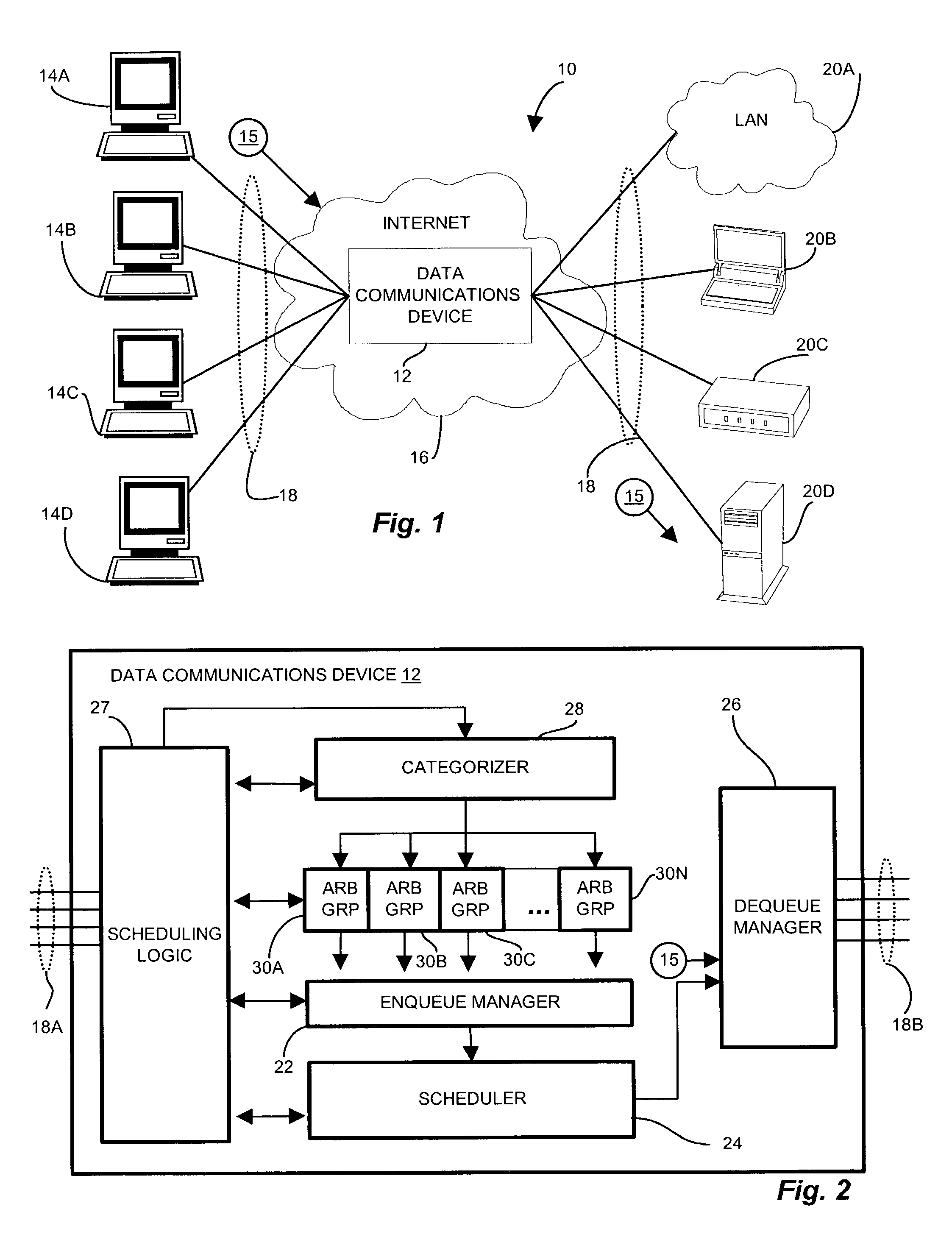Methods and apparatus for reducing arbitration delay in channelized systems by use of additional scheduling hierarchy
a scheduling hierarchy and arbitration delay technology, applied in the field of channelized system arbitration delay reduction by using additional scheduling hierarchy, can solve the problems of insufficient utilization, inability to meet the needs of higher-speed outgoing lines, and inability to meet the needs of high-speed outgoing lines, so as to avoid outgoing bubbles or gaps on transmission lines
- Summary
- Abstract
- Description
- Claims
- Application Information
AI Technical Summary
Benefits of technology
Problems solved by technology
Method used
Image
Examples
Embodiment Construction
[0027]The present invention provides techniques and mechanisms that form arbitration groups, or speed groups of logical interfaces, and allocate scheduling resources in proportion to the bandwidth attributed to each group. A categorizer computes and allocates a proportion of total bandwidth to each arbitration group. Incoming messages have a transmission rate based on QOS, content type, or other constraints. The switch fabric of the router switches the incoming messages according to addressing information of successive destinations of the messages for forwarding as outgoing messages. The categorizer classifies the logical queues, and hence the enqueued messages into the arbitration groups based on the intended or proscribed transmission speed of the logical queue. A dequeue manager pulls the outgoing messages from the arbitration groups at a frequency in proportion to the total percentage of outgoing transmission bandwidth represented by the group. When the dequeue manager informs t...
PUM
 Login to View More
Login to View More Abstract
Description
Claims
Application Information
 Login to View More
Login to View More - R&D
- Intellectual Property
- Life Sciences
- Materials
- Tech Scout
- Unparalleled Data Quality
- Higher Quality Content
- 60% Fewer Hallucinations
Browse by: Latest US Patents, China's latest patents, Technical Efficacy Thesaurus, Application Domain, Technology Topic, Popular Technical Reports.
© 2025 PatSnap. All rights reserved.Legal|Privacy policy|Modern Slavery Act Transparency Statement|Sitemap|About US| Contact US: help@patsnap.com



